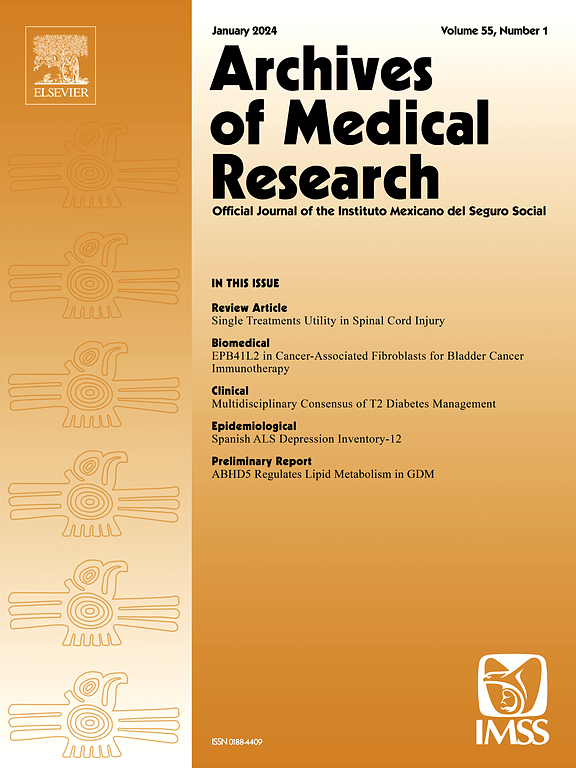多能干细胞向功能性内皮细胞的高效和可再生分化方案:揭示血管再生途径。
IF 3.4
3区 医学
Q1 MEDICINE, RESEARCH & EXPERIMENTAL
引用次数: 0
摘要
内皮细胞(ECs)在许多心血管疾病的治疗中起着至关重要的作用,如血管修复、组织工程和药物输送。这些细胞的分化过程是复杂的,涉及各种来源和许多分子和细胞事件。多能干细胞(PSCs)分化为内皮细胞是在实验室中制造内皮细胞最有效的来源之一,在再生医学中具有巨大的潜力。但是在分化过程中会出现不同的细胞类型。目的:本研究提出了一种可靠的、可重复的方法,用于高效地将人多能干细胞(hPSCs)分化为高纯度(bb0 98%)的成熟内皮细胞。方法:采用荧光活化细胞分选法(FACS)从人造血干细胞中分离FLK1+细胞。然后通过添加内皮生长因子(VEGF、FGF和EGM-2培养基)将分离的FLK1+细胞分化为高纯度内皮细胞(ECs)。通过评估关键内皮标志物和评估其功能能力,如管形成和对血管生成信号的反应,对分化的内皮细胞进行了广泛的表征。最后,用CD31抗体进一步纯化ECs。结果:分化的人造血干细胞来源的内皮细胞(hpc - ecs)表达高水平的PECAM-1 (CD31)、VE-cadherin (CD144)和血管性血液病因子(vWF),超过98%的细胞显示这些标志物。此外,hpsc - ec形成管状结构,并有效地吸收了乙酰化荧光标记的低密度脂蛋白(DiI-ac-LDL),证明了它们作为内皮细胞的功能。结论:我们的研究阐明了人造血干细胞向内皮细胞分化的分子机制,强调了决定内皮细胞命运的关键信号通路。这些发现为可移植内皮细胞的规模化生产提供了框架,代表了再生医学个性化治疗和组织工程的重大进步。本文章由计算机程序翻译,如有差异,请以英文原文为准。
Efficient and reproducible differentiation protocol for pluripotent stem cells into functional endothelial cells: Unveiling the path to vascular regeneration
Introduction
Endothelial cells (ECs) play a crucial role in many treatments for cardiovascular diseases, such as blood vessel repair, tissue engineering, and drug delivery. The process of differentiating these cells is complex and involves various sources and numerous molecular and cellular events. Differentiating pluripotent stem cells (PSCs) into endothelial cells are one of the most effective sources for creating ECs in the lab and offers great potential for regenerative medicine. However, different cell types can appear during differentiation process.
Objectives
This study presents a reliable and reproducible protocol for efficiently differentiating human pluripotent stem cells (hPSCs) into mature endothelial cells with high purity (>98%).
Methods
FLK1+ cells were isolated from hPSCs using fluorescence-activated cell sorting (FACS). Then isolated FLK1+ cells differentiated into high-purity endothelial cells (ECs) by adding endothelial growth factors (VEGF, FGF, and EGM-2 medium). The differentiated ECs were extensively characterized by evaluating key endothelial markers and assessing their functional abilities, such as tube formation and response to angiogenic signals. Finally, the ECs were further purified using a second FACS step with a CD31 antibody.
Results
The differentiated hPSC-derived endothelial cells (hPSC-ECs) expressed high levels of PECAM-1 (CD31), VE-cadherin (CD144), and von Willebrand factor (vWF), with more than 98% of the cells showing these markers. Additionally, the hPSC-ECs formed tubular structures and effectively took up acetylated fluorescently-labeled low-density lipoprotein (DiI-ac-LDL), demonstrating their functionality as endothelial cells.
Conclusion
Our study clarifies the molecular mechanisms involved in the differentiation of hPSCs into endothelial cells, emphasizing key signaling pathways important for determining endothelial cell fate. These findings provide a framework for the scalable production of transplantable endothelial cells, representing a significant advancement in personalized therapies and tissue engineering for regenerative medicine.
求助全文
通过发布文献求助,成功后即可免费获取论文全文。
去求助
来源期刊

Archives of Medical Research
医学-医学:研究与实验
CiteScore
12.50
自引率
0.00%
发文量
84
审稿时长
28 days
期刊介绍:
Archives of Medical Research serves as a platform for publishing original peer-reviewed medical research, aiming to bridge gaps created by medical specialization. The journal covers three main categories - biomedical, clinical, and epidemiological contributions, along with review articles and preliminary communications. With an international scope, it presents the study of diseases from diverse perspectives, offering the medical community original investigations ranging from molecular biology to clinical epidemiology in a single publication.
 求助内容:
求助内容: 应助结果提醒方式:
应助结果提醒方式:


